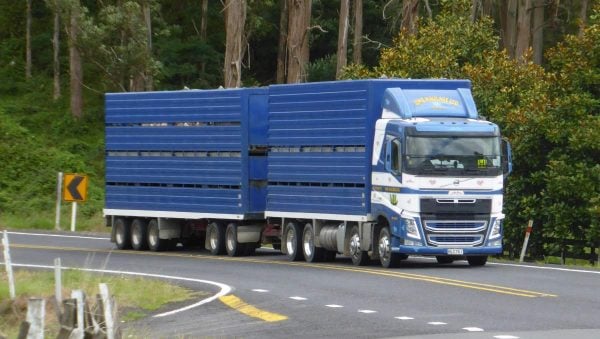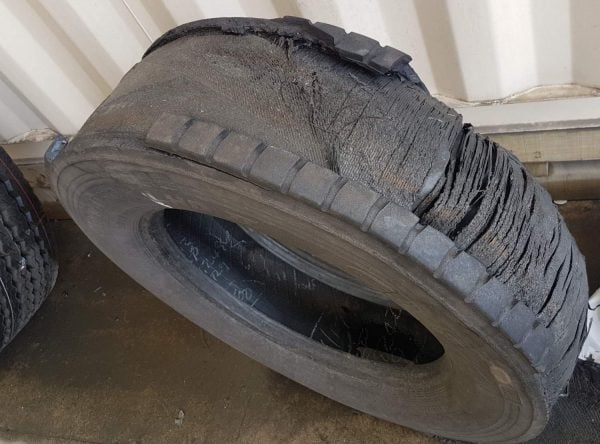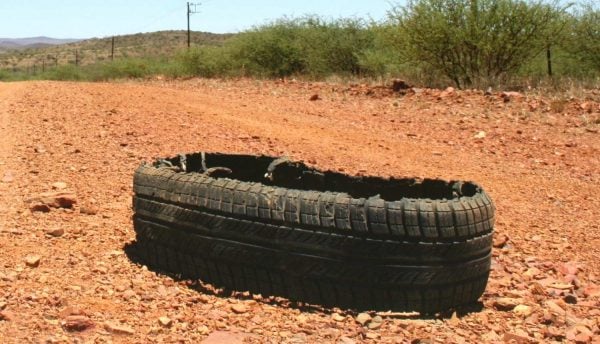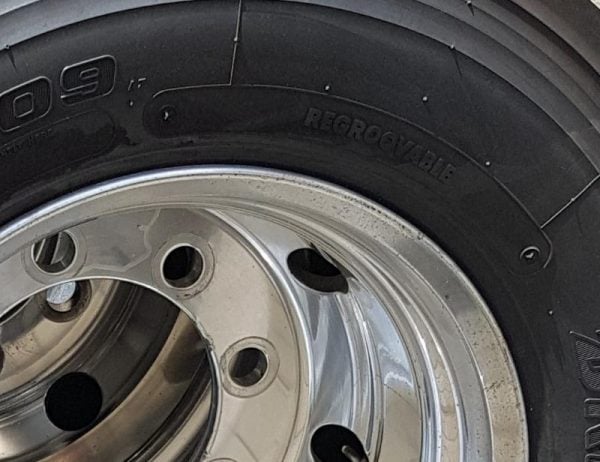Retreads or regrooves are tyres which have been used at least once and had new tread or new grooves applied so that they can be used again. They were popular for passenger vehicles a couple of decades ago but fell out of favour as the cost of new tyres dropped dramatically. However, they are still extremely popular for truck tyres.
There’s a difference between retreads and regrooves. In a retread, a new tread is applied, but in regrooves, a deeper groove is cut to maintain the tread depth.
Why use retreads?
There are only two reasons for using retreads:
- They are cheaper than new tyres
- They are more environmentally friendly than new tyres
Transport companies work on very thin profit margins, so reducing costs is a huge factor in whether they survive or not. A super b-train can have up to 40 wheels, so the tyre replacement bill can be eye-watering.
A trailer tyre can last for over half a million kilometres if it is retreaded or regrooved several times. Of course, as a transport operator you can choose which axles you want to use retreads on. For example, you might only use virgin (new) tyres on your steer axles, but retreads everywhere else.
Because the tyre’s carcass is retained, this means it’s effectively recycled. A new truck tyre weighs 70-75kg. Around 50kg of this is retained in a retread meaning that the additional raw materials are around 20kg. This saves hundreds of millions of litres of oil per year and drastically reduces the carbon footprint of the transport industry.

There are no special requirements for looking after a retread, you simply balance them like any other tyre, ensure they’re at the correct pressure, inspect them frequently for cuts and bulges in the sidewall, make sure there’s nothing stuck in the grooves and, if they are duals (i.e. dual wheels on a truck) check that nothing is caught between them.
How many times can you retread a tyre?
Tyres could be retreaded up to 10 times, depending on the type of use and whether the tyre is displaying any damage.
When must you not use a retread?
Retreads must never be used on vehicles that carry dangerous goods; they can only use virgin tyres.
Retreads cannot be created if the tyre’s carcass is damaged or has degraded; tyres cannot be retreaded indefinitely.

In some countries, it is illegal to put a retread on a steering axle.
Is a retread safe?
When it comes to passenger cars, some insurance companies are reluctant based on it being difficult to determine the history of the tyre.
There are some myths about retreaded tyres. For example, it’s perceived that retreads have less grip, leave more rubber on the road and cannot be driven at legal speeds. These are not true. They have similar grip properties as budget tyres, leave a comparable amount of rubber and can be driven at legal road speeds. They are rated to at least 140km/h, but you wouldn’t use them for your race car.
However, retreaded tyres do wear out slightly quicker than new tyres, but as they are cheaper to purchase, this more than makes up for it.
If you see a tyre carcass on the side of the road, this is usually caused by under-inflation causing the tyre to overheat, puncture and leave the rim. If a trailer tyre gets a puncture it’s very difficult for the driver to feel it or hear it. Eventually, the tyre breaks down and leaves the rim.

How are retreads made?

There are four ways of making a retread:
- Pre-cure – this is very common. The tread is wrapped around the tyre carcass and fixed using high-strength glue/cement. This is the most flexible way as the tread can be fitted to tyres of any size. It does leave a visible seam where each end of the tread joins.
- Hot applied – a raw rubber layer is applied to the casing. This is then vulcanised in a press at high-temperature and pressure.
- Mold cure is where raw rubber is applied to the casing which is then placed in a mold to give the tyre its tread pattern. This is less common because tyres come in so many different shapes and sizes and a mold is required for each one.
- Bead-to-bead molding involves the addition of both the tread and new sidewalls and it’s not very common.

